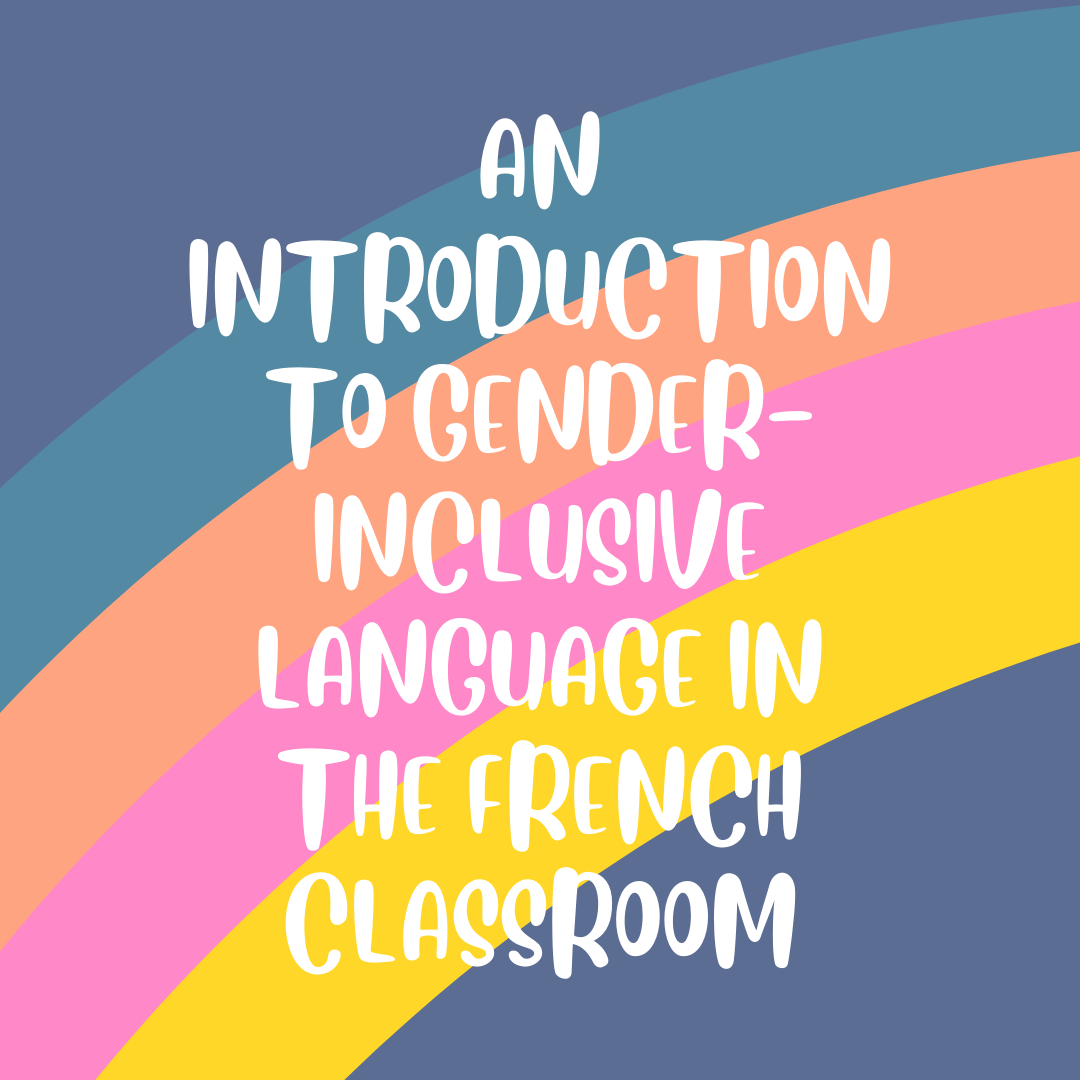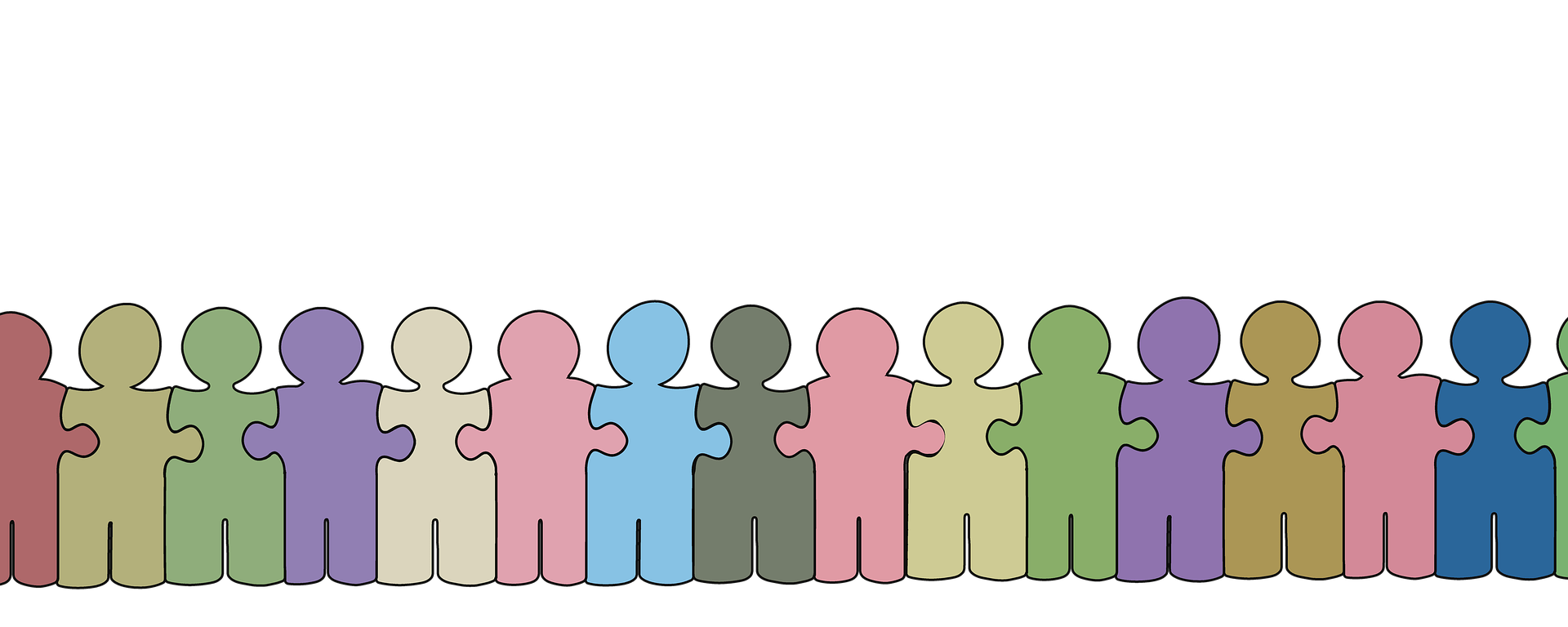As a teacher of a gendered language, one of the urgencies in my classroom this year is creating space for gender-inclusive language. My students are being more open than ever before with their identities, and one of my biggest fears is that they will sit in my classroom, look at the French language, and then decide the language does not include them. To that end, I have become a student myself, learning as much as I can about gender-inclusive language, so my students feel safe and welcome in my classroom. I am very early on in this journey, and here is where I’ve begun.
Classroom Signs
Firstly, I bought this sticker for my laptop from Classroom Yogi. My favourite moment with this sticker so far has been when one student asked to take a picture of it because she and her dad are trying to learn as many different LGBTQ+ flags as possible. 💕
Next, I finally got to have a classroom again (yeah!), and these are the new posters I was excited to put up. My students have enjoyed learning how to use the gender-neutral pronoun iel in their work.
French Subject Pronoun Posters (Free on TPT)
LGBTQ+ Posters ($3 on TPT)
La vide des noirs compte Posters (Free on TPT)
For the first time ever, my French classroom @montcrest will have posters to show how to use non-binary pronouns, as well as posters in support of LGBTQ2+ students and Black students.
These are from @lasenorasara, @fleavecmmed, and Oui, Madame Wee.#fslchat #cohort21 pic.twitter.com/ZNQZiIQjbV
— Jenn Bairos (@jennbairos) September 3, 2021
Identity Chat Mats
I have started using chat mats more and more in my classroom. Amy Lenord shares on Twitter the different ways you can use chat mats in your language classroom, and this was an easy, safe way for me to introduce the pronoun iel to everyone. I started by giving my students (Grade 7 Core French) a copy of the chat mat and projecting it on the board. I modeled my answers and ask students to share their answers if they were comfortable sharing with the whole class. Then they worked in pairs asking and answering different questions. The next day, we revisited the chat mat again, and this time they wrote sentences on whiteboards.
Here is a shared Google Drive with the Chat Mats inside. (As a note, sometimes they print better as a JPEG rather than a PDF….mystery 🤷♀️.)
Introducing Adjectives
Inspired by this Tweet from Cécile Lainé, and the learning I’ve been doing from Dr. Kris Knisley, I felt ready to introduce my students to non-binary adjectives. Dr. Knisley has this straightforward handout for educators, but I wanted to narrow my introduction even further for my students in our first lesson. I created this slide deck and this handout for us to start making observations and practising the new language.
Next, my students were given a piece of paper with their own cartoon monster and an opportunity to describe them using non-binary language. I am so proud of their first attempts, and it has really given me a picture of what my next steps might be.
So that’s where I’m at for now. Suggestions and feedback are always welcome. My next step in this area is to look for more authentic ways to use non-binary vocabulary in the classroom, starting with vocabulary for family members.
I honestly feel like I could do a whole post on people to follow who are doing excellent work in the area of teaching social justice in language education. For now, my gratitude goes out to Dr. Kris Knisely who has been a resource to which I often return in my own learning on the intersection of LGBTQ+ communities and the French language.
Jenn
















